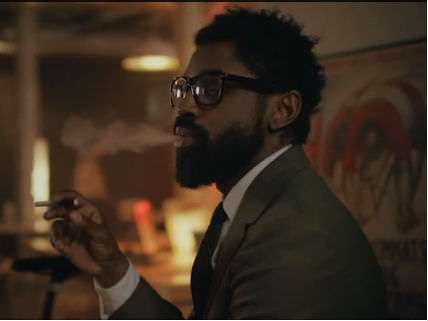New York City May Ban Vaping Because It Looks Like Smoking

The New York City Council is considering a ban on the use of electronic cigarettes in bars, restaurant, and other "public places"—not because there is any evidence that the devices pose a hazard but because they look too much like regular cigarettes. Councilman James Gennaro, a sponsor of the proposed ban, tells The New York Times, "We see these cigarettes are really starting to proliferate, and it's unacceptable." Why is it unacceptable? According to the Times, "Mr. Gennaro said children who could not differentiate between regular and electronic smoking were getting the message that smoking is socially acceptable."
So it is not the product that bothers Gennaro as much as the message it supposedly sends. Presumably he would have the same complaint if people started wearing T-shirts proclaiming that "Smoking Is Cool," although banning those would be constitutionally problematic. Might there be a way to address Gennaro's concern about the impact that the sight of vaping has on impressionable young minds without resorting to the use of force? I'm just spitballing here, but maybe parents could explain to their children the difference between e-cigarettes, which deliver nicotine in a propylene glycol vapor, and conventional cigarettes, which deliver nicotine in a cloud of toxins and carcinogens generated by burning tobacco. Even if Gennaro does not trust people to educate their offspring about such matters, surely a measure short of a total ban could accomplish the goal he has in mind. How about taking a page from the city's regulations regarding toy guns by restricting e-cigarettes to bright fluorescent colors, so they can be readily distinguished from the real thing?
Some might question Gennaro's premise that children should never see adults doing something (or seeming to do something) that children are not supposed to do. If kids must be shielded from the sight of vaping because it looks like smoking, perhaps they also should be shielded from the sight of drinking—not just of alcoholic beverages but of any drink that resembles an alcoholic beverage. After all, how does an innocent child know the difference between O'Doul's and Budweiser, or between a Coke that contains Jack Daniels and one that does not?
Gennaro's rationale for banning vaping in bars and restaurants actually is similar to the motivation for banning smoking in bars and restaurants. The official rationale for such laws is protecting employees, and their popularity can be explained by the simple fact that most people find tobacco smoke distasteful, whether or not they actually worry about the long-term health consequences of sitting in a smoky bar for 30 years. But from a "public health" perspective, the real payoff, in terms of reducing morbidity and mortality, is deterring smoking by making is less convenient and less socially acceptable. Gennaro worries that e-cigarettes will undermine that goal.
That seems rather implausible, since the main selling point of e-cigarettes is that they eliminate tobacco, its combustion products, and the health hazards associated with them. Although the Times says vaping in public remains legal thanks to "a loophole" in New York's smoking ban, the truth is that vaping remains legal precisely because vaping is not smoking. By seeking to equate the two, control freaks like Gennaro may achieve the opposite of their avowed aim, increasing rather than reducing smoking-related illness. As Craig Weiss, president of the e-cigarette company NJoy, tells the Times, "If you make it just as inconvenient to use an electronic cigarette as a tobacco cigarette, people are just going to keep smoking their Marlboros."
Yesterday Zenon Evans noted that Chicago also is considering a ban on vaping.


Show Comments (37)